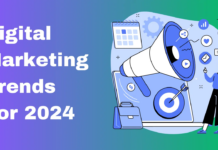The marketing funnel is about to go like this: awareness, interest, thinking, intention, evaluation, decision. Typically, marketing is responsible for the first part of the funnel, and then the sale takes over.
However, digital transformation has changed the sting and will continue to continually change roles in that framework. The technology has introduced new marketing tools that have completely changed the image of marketing. Specifically, thanks to data and analytics, businesses have a much clearer picture of who their customers are and how to set up a marketing strategy.
How did digital transformation change the marketing funnel?
Awareness
This step of the marketing funnel is where you represent your business to potential customers. An effective way to give a positive light to your business is through marketing automation, which has an integral role in the marketing funnel, because it proven to save time and money. CRM (Customer Relationship Management) software helps segment the audience, offers perfect email for email campaigns, collects leaders, and evaluates progress. Using personalized e-mails and messages make the client feel as his request is heard and fulfilled. With the help of analytics, more and more businesses will know who your audience is and can easily predict who will proceed in further conversion.
Interest
After making a good impression, your customer entered through the marketing funnel and expressed interest in your product or service. Your audience analysis will show you where your potential customers are and what messages will likely reduce their interest. The data collected from Google Analytica offer a wealth of consumer demographics information and keywords that they used to reach your site. Now that you already know who your customers are, it’s easier to give them what they want. To keep your potential customers in this part of the funnel, do not bother with data that is irrelevant. Things like the price for example are not the most important in this part of the funnel. This is about the experience that will be passed on to the potential customer.
Thinking
In this part of the marketing funnel it is time to turn the interest and consideration of the product to potential customers in some action. To do this, an analysis is needed again to determine any additional messages that will make a difference. With the information generated from the generated shared interest in the upper part of the funnel, digital marketing effectively transmits the customers from “I like it” to “I buy it.”
Intention
This phase of the funnel is the moment when the client places his order in the cart. Here you can use chatboots to answer his questions. The goal is to close the sales here, but if the customer only left the order in his cart and did not continue to pay, it is time to return to the previous stages. Even if a customer left the site, AI uses the information collected to remind the client of the “Forgotten product”. During that time AI offers customers or some discount or promotion to bring them back to the cart. This type of marketing works great and in most cases sells.
Decision
The sales team here takes action to complete the transaction, but with little help from the AI. The goal should not be just closing the sales. The focus should be on earning trust by effectively creating loyal customers who come back again. Digital transformation continues to change the marketing funnel, adapting to the buyer’s experience at every step of the way. To effectively measure success, vendors must create analytics-based data that will provide feedback from customers as an invaluable part. Accepting the right technology provides good marketing strategies that educate and inspire customers by creating a lasting, loyal customer base.






















